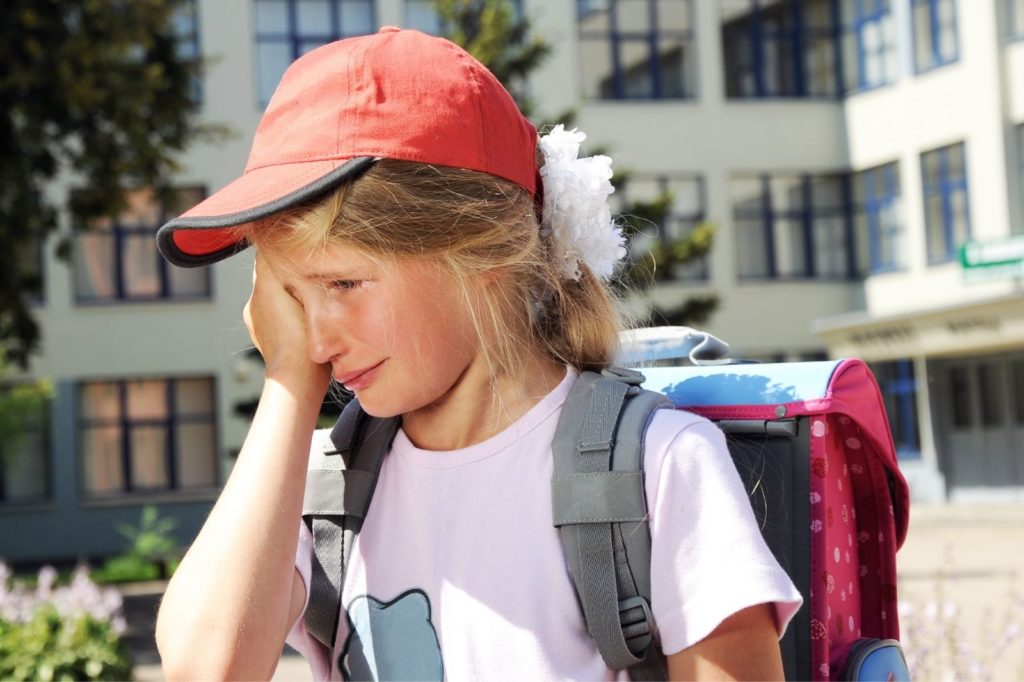Turn on the news or check your phone updates and it seems like we are being inundated with the news of traumatic events around the world, in our hometowns, and in our schools. It can be overwhelming as adults, but imagine how overwhelming it can be for children. Sometimes, it is easy to forget that our children are affected by the traumatic events around them even if they can’t articulate the impact they have on them at times. The National Child Traumatic Stress Network (NCTSN) estimates that about two thirds of U.S. children have experienced a traumatic event by age sixteen but have difficulty coping with the impact of that trauma. If left unaddressed, the effects of trauma can impact a child’s ability to thrive in school. Here’s what you need to know about helping children thrive in school (and life) despite the trauma they’ve experienced.
What is Trauma?
Trauma can take many different forms but it is a “frightening, dangerous, or violent event that poses a threat to a child’s life or bodily integrity. Witnessing a traumatic event that threatens life or physical security of a loved one can also be traumatic,” according to the National Child Traumatic Stress Network.
Examples of traumatic events include witnessing or experiencing domestic violence or physical abuse; being the victim of sexual abuse; witnessing violence or threatened violence; or experiencing medical trauma or complex grief. Even if the traumatic event itself was short in duration, the physical and psychological effects of trauma can linger for both children and adults.
Who Is At Risk?
According to the NCTSN, 24.5% of children witnessed a traumatic event in their family or community, 18.4% had witness a community assault, and 6.1% witnessed a bomb threat at school. The American Psychological Association reports that exposure to sexual abuse for youth is estimated to be 25-43%, that 7.9 million U.S. children were treated for injuries related to traumatic accidents, and that 400,000 were treated for injuries related to violence.
And, there are specific populations that are at a greater risk for being negatively affected by traumatic events including children exposed to substance abuse, economic stress, and homelessness. Children in military and veteran families, children with intellectual and developmental disabilities, and LGBTQ children are also at a greater risk for being exposed to trauma.
Signs of Trauma
The children in our communities are not immune to the effects of trauma and are affected in ways that may look different than how adults are affected. Children are affected by trauma may exhibit the following symptoms as reported by the American Psychological Association:
- Developing new fears
- Separation anxiety
- Sleep disturbances (e.g. nightmares)
- Sadness
- Loss of interest in activities once enjoyed
- Reduced concentration
- Decline in quality of schoolwork
- Anger, irritability
These symptoms can impact a child’s ability to thrive at school. For example, if a child finds it difficult to get quality sleep because of nightmares, she will have trouble focusing in school. Or, if a student has developed fears stemming from the trauma, he will likely experience anxiety while at school which can make it difficult to concentrate, learn, and be present at school. If a child is worried about their safety or the safety of a loved one, they may be tempted to skip class or school altogether. The Child Mind Institute describes how these and other symptoms include poor self-regulation and negative thinking can be “obstacles” to students — and this means it is critical for schools to recognize and provide help for students affected by trauma.
How Schools Can Help
Recently, there has been a push for trauma-informed classrooms or trauma-informed learning. In other words, by understanding how trauma can affect students, teachers can tailor their instruction and classroom management to best reach their students. A school environment can provide the consistency and dependability a child needs in the midst of uncertainty after experiencing trauma.
The Child Mind Institute recommends that educators help their students identify the emotions they are experiencing and help them regulate their emotions instead of going straight to disciplinary action when a student acts out. Neuropsychiatrist Daniel Siegel says that helping children identify their emotions can help them regulate them. He calls this “name it to tame it”. By helping students identify when they are frustrated, upset, or angry, they can help the child learn to recognize their own emotions and to choose how to respond to that emotion (e.g. going for a walk down the hall when frustrated instead of slamming their textbook on the floor).
Other helpful techniques include helping students grow in their awareness of their body’s response to stress, according to the Greater Good Science Center at UC Berkeley, and to learn ways to manage their stress response. Strategies could include learning progressive muscle relaxation, deep breathing, calming coping statements, and other mindfulness activities. Educators can also foster an open dialogue among the administration and students about the reality of mental illness, trauma, and support services available.
While the effects of trauma on children is a reality, the good news is that schools can play a pivotal role in helping students heal and thrive in the midst of their healing process. Schools and educators can make a difference!










